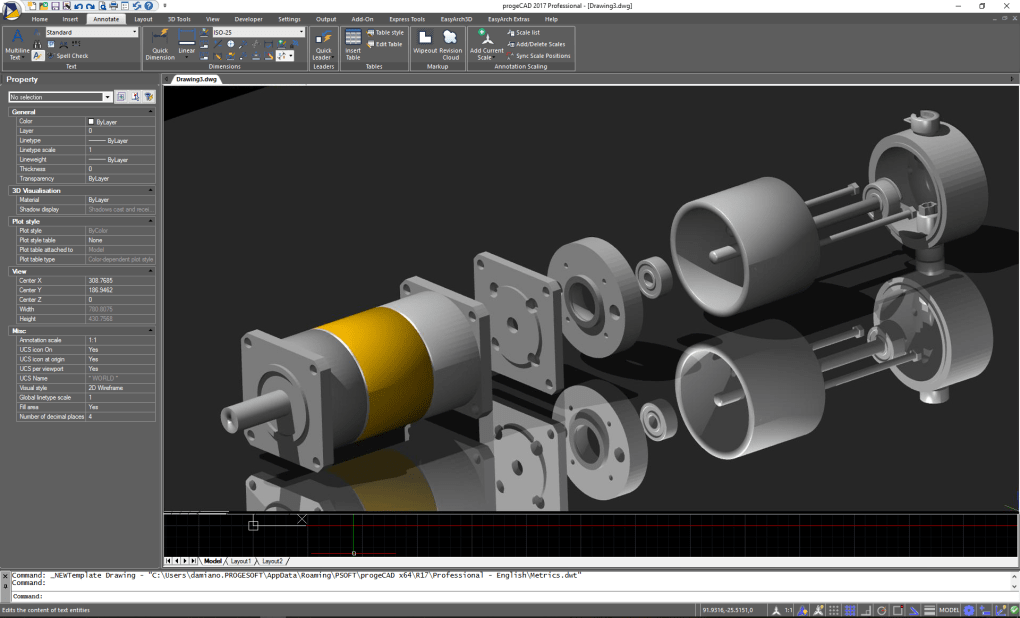

To see elevations and sections, you need to position a view perpendicular to the Z axis, then Right, Left, Front or Back. In the Elevation branch we have elevations, in the Floor plans branch – floorplans, in the 3dview branch – axonometric or perspective views, in the Sections branch – sections, in the Ceiling Plans branch – plans of the suspended ceilings. The third tab, Views, lists views relating to floor plans, sections, elevations, views of details created by the designer in the RVT file. Expanding the branch ‘Level’, it is possible to see what types of objects it contains and therefore to perform an even more targeted operation on their visibility. It is evident that, if you need to use only one floor, it will be easy to make the others invisible through this tab. In the previous picture you can see a list of 4 levels.

In the second tab, Hierarchy, the objects are organized according to the tree structure that starts from the Building and branches in various floors(Levels). Then, passing to the elements making up a building, we have:

If you have attached a model in the RVT file format (Revit files), the panel will consist of 3 tabs: To see the contents of the panel, you need first select the inserted BIM model. Hiding unnecessary objects helps you get clearer representations. Choosing the Attach insertion mode, you will be able to manage the visibility of various elements of your model through the special panel which is displayed using the BIMPANE command. The BIM file is not organized in Layers like a common CAD file. Once your model is inserted, all its elements become visible on the screen. It is always better to set the units you normally use rather than trust the settings saved in the file. The progeCAD BIMIMPORT and BIMATTACH commands prompt you to specify the point where to insert your model and then the units of measurement to be represented with. The commands for insertion are available in the group “BIM Files” on the ribbon Insert: The model is a single object, as if it were a block, and it is reloaded at each new opening of a drawing. It is a process similar to that of external references (XREF). The second mode allows you to link a BIM file to your DWG drawing without embedding it. 3D objects of a BIM model are therefore converted into 3D Meshes that can be managed with the corresponding commands. The first mode is useful when you need to extract part of the building geometry present in a BIM file so that you could reuse it. There are two modes of insertion of a BIM model into a DWG file: So let’s see in detail: insertion, predefined views display, the creation of sections and elevations from a BIM model in progeCAD 2021. Viewing the predefined tables and creating ad hoc sections and elevations, designers can easily realize how model geometry is organized.įurthermore, you can determine which elements to display and which to hide and that helps you reduce geometry complexity. This article will demonstrate us how progeCAD 2021 can handle BIM models also offering tools to generate 2D representations from these models, such as elevations and sections. For the latter, CAD products supporting this type of file represent a great asset…
#Progecad help update
Not everyone is ready to acquire BIM yet, because either they fail to keep pace with update processes or they are designers whose field of action does not justify the investment in BIM Authoring software. Published on CAD Semplice a blog of Domenico IEVA BIM models are becoming increasingly common among the files designers exchange in their work.


 0 kommentar(er)
0 kommentar(er)
